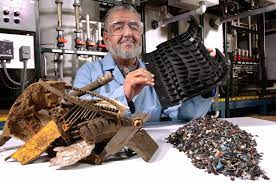
Plastic, ever since its invention, has been constantly diversified in terms of its characteristics. In today’s time, plastic comes in a variety of forms which include the plastic used for drinking water bottles or the wrappings used in food containers. Both of these are plastics and yet vary from each other.
Similarly, plastic that is used for fittings and other industrial applications is different from the varieties mentioned above. Some of these plastics available in today’s time are categorised as engineering plastics.
Engineering Plastic: Definition
Engineered plastic, also referred to as engineering plastic, refers to a specific group of plastic materials that come with some kind of unique mechanical and/or thermal properties. They are mechanically or thermally superior to the more commonly used commodity plastic materials, which include polystyrene, polyethylene, PVC, and polypropylene.
In the next part of this blog, we will focus on engineering plastics, what they are and what makes them different from other conventional plastic varieties. We will also discuss the critical applications of engineered plastic. But before that, let us take a look at the most common types of engineering plastics available in the market right now.
The Different Types Of Engineered Plastic
Here are the most common types of engineering plastics being manufactured and used across the globe.
Acrylonitrile butadiene styrene (ABS Plastic)
ABS plastic is a terpolymer that consists of three monomers which are acrylonitrile, butadiene, and lastly, styrene as the abbreviation goes.
Polycarbonates (PC Plastic)
PC plastic is a particular group of thermoplastic polymers. It contains carbonate groups in its chemical structure. PC Plastic is characteristically solid and durable, and some grades of PC plastic are also optically transparent.
Poly (methyl methacrylate) (PMMA Plastic)
PMMA Plastic, also referred to as acrylic, is one of the essential plastic polymer materials in today’s time. The material features excellent transparency, as well as chemical stability, and weather resistance. Along with that, it also enables easy processing and dyeing and has an attractive appearance.
Other varieties of engineering plastic are:
- Polyoxymethylene plastic (POM)
- Polyethylene terephthalate (PET)
- Polyphenylene sulphide (PPS)
- Polybutylene terephthalate (PBT)
- Polyphenylene oxide (PPO)
- Polyetherketone (PEK)
Essential Applicators Of Engineered Plastic
Engineering plastic is more expensive than standard plastics. Naturally, these plastics are manufactured in lower quantities and are generally used for low-volume applications like mechanical parts and seldom for bulk and high-volume applications. Check out Gulf Rubber’s products to understand more about this niche.
Engineering plastic is used in a range of industrial applications all across the globe. The materials are popular in a variety of industries and are used on a large scale for the production of a variety of products. From 3D printing to dome lamps, curved glass windows, sound insulation walls as well as auto parts, machine tools, gears, bearings, instrument internals, and a lot more, they are used almost everywhere.
Ending Note
Engineering or engineered plastic is one of the most widely used materials in industrial applications, which range from delicate 3D printing to something as sophisticated as aeroplane parts in the aircraft and automotive industries. Any manufacturer needing engineered plastic must source it from reliable and reputed suppliers or manufacturers to ensure the highest quality and performance.






